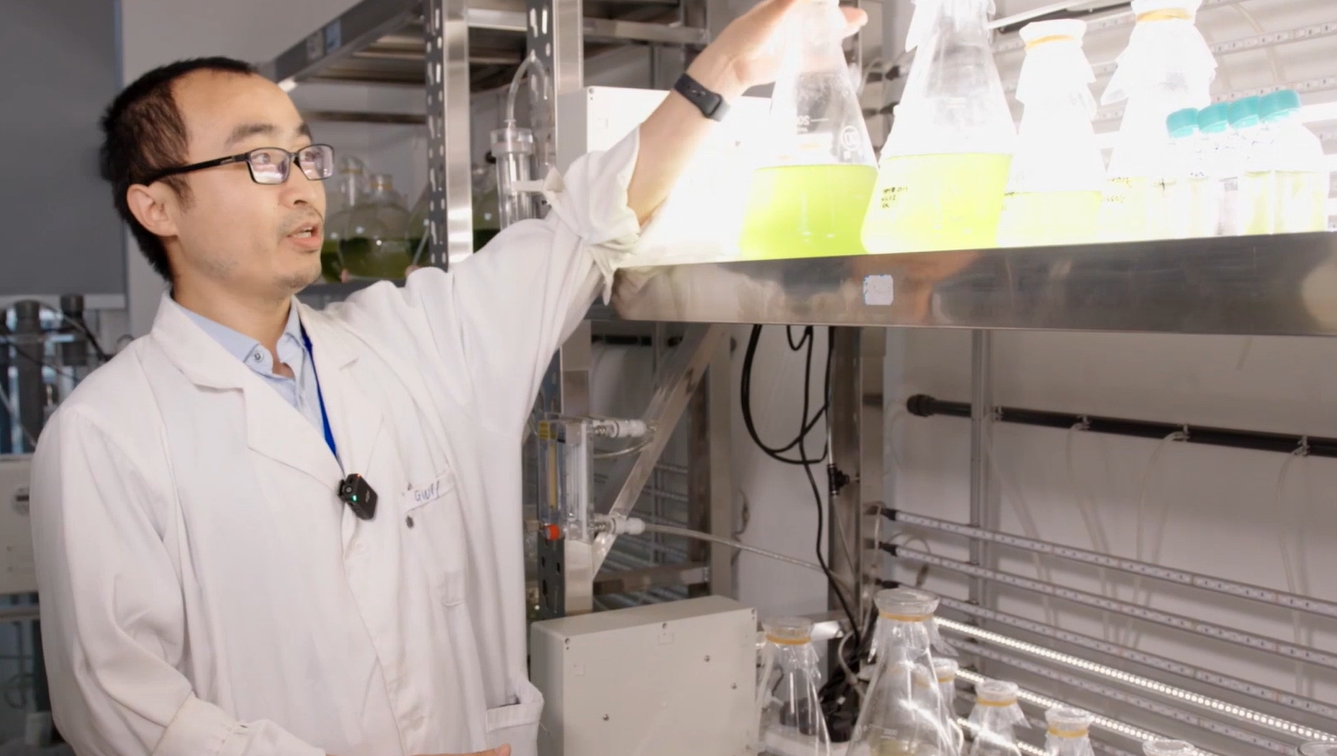(Text by GU Wenhui, wenhuigu@qdio.ac.cn)

What's in a drop of seawater? Though the seawater may appear clear, it is teeming with microorganisms, some of them are microalgae. Microalgae are microorganisms that, like plants, absorb sunlight and conduct photosynthesis. They are found in various environments, including land, oceans, lakes, deserts, and mountains, and even in humid air. Microalgae are not only Earth's primary producers, playing a crucial role in the global carbon cycle and oxygen production, but they also contribute nearly 50% of the oxygen we breathe. Due to their rapid growth, strong environmental adaptability, and metabolic diversity, microalgae are vital biological resources in fields such as bioenergy, nutritional supplements, biomedicine, and environmental remediation.
After graduating from Shandong University with a bachelor's degree, I pursued my PhD at the Institute of Oceanology, Chinese Academy of Sciences, where I have been working with microalgae ever since. In recent years, my research has focused on uncovering the fundamental biological mechanisms of microalgae, their applications in synthetic biology, and large-scale production.
To understand the natural process of carbonate precipitation involving halophilic algae and bacteria, I discovered that co-culturing halophilic algae with halophilic bacteria significantly promotes algae growth. I also clarified how extracellular Ca²⁺ concentration gradients influence calcium carbonate precipitation. Additionally, I explored the molecular mechanisms by which algal cells sense and regulate cell density signals, proposing a Ca²⁺-mediated mechanism for cell density sensing and signaling. For the first time, I reported that the autofluorescence, chlorophyll fluorescence, in algae could act as an intercellular communication signal that regulates iron absorption. In my work with microalgae such as Dunaliella salina, Haematococcus pluvialis, and Phaeodactylum tricornutum, which synthesize carotenoids, I tried to understand their efficient mechanisms for high-light adaptation and intracellular carbon utilization and secondary carotenoids biosynthesis.
Also, I have involved in technology commissions for large enterprises and overseen the construction of large-scale microalgae factory, for production of microalgae-based food and nutrients. I hope that my research will not only contribute to understanding the fundamental principles of microalgal life activities but also drive the industrial application of microalgae, maximizing their economic value and scale. I hope that microalgae can better serve human health and contribute to the sustainable development of Earth's ecosystems.
(Editor: ZHANG Yiyi)

